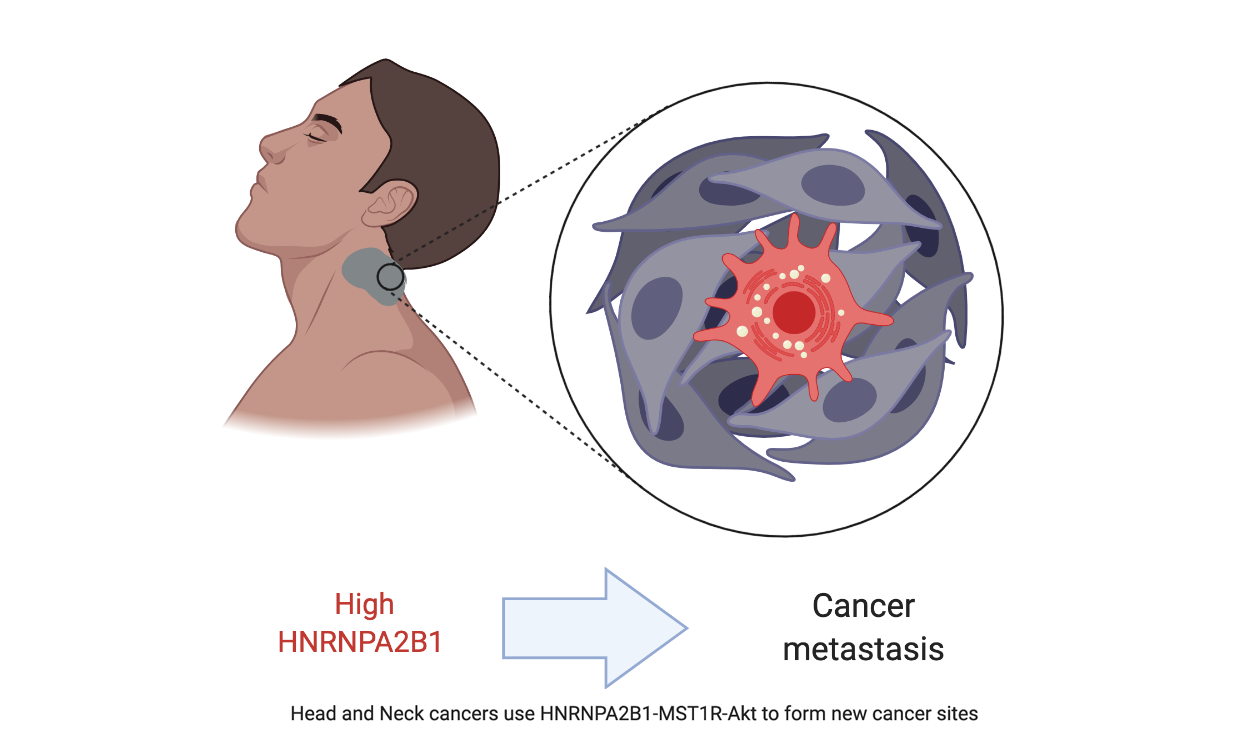
Cancer cell migration is one of the critical challenges for currently available treatment modalities, and understanding that how this particular mechanism is being regulated might help designing better cure.
AUG 15, 2020 | WRITTEN BY RAJESH D. GUNAGE, RATNESHWAR THAKUR
Head and neck cancers (HNC) includes throat, mouth, nose, lips, voice box and salivary gland cancers. HNC is one of the deadly cancers and majorly associated with the tobacco and alcohol abuse. Currently, the HNCs are being treated using radiotherapy and surgical removal of cancerous tissues, but there is one big problem for this strategy. HNC cells always move from the primary site of cancer and thus evading the medical treatment.
Dr. Sanjeev Shukla at Indian Institute of Science Education and Research (IISER), Bhopal - in collaboration with oncologists and pathologists has found a novel signaling, associated with aggressiveness of cancerous cells. According to the study published in the journal, ‘Laboratory Investigation’, the HNC cells show uncontrolled expression of cancer associated isoform of an oncogene which in turn promotes the invasive behavior of HNC cells. This study might be useful in further understanding of cancer cells behavior and to find better treatment.
Dr. Amit Gupta and Sandhya Yadav, team members of Dr. Shukla’s group at IISER Bhopal used HNC patient samples and found that HNRNPA2B1 is highly expressed in head and neck cancer cells. In normal cells, the HNRNPA2B1 expresses at low levels and works harmoniously with other proteins to control cellular homeostasis. High levels of HNRNPA2B1 create a unique situation for cancer cell and majorly promote the expression of an oncogenic isoform of MST1R genes which is known to be involved in cell movement.
 To study the HNC Dr. Amit Gupta and Sandhya Yadav used various methods of international standard for cancer cell migration studies such as ‘Transwell invasion assay’, ‘cell migration assay’. This directly measure if a cell can cross a barrier to enter new environments. In this experiment they used Human oral squamous carcinoma cells (H413) and mimicked high HNRNPA2B1 expression seen in HNC patients. Surprisingly, every time cells with high HNRNPA2B1 aggressively migrate, shows their nature as a potential metastasic cells. In these cells HNRNPA2B1 regulates cancer specific MST1R and this in turn opens a new land of opportunity.
To study the HNC Dr. Amit Gupta and Sandhya Yadav used various methods of international standard for cancer cell migration studies such as ‘Transwell invasion assay’, ‘cell migration assay’. This directly measure if a cell can cross a barrier to enter new environments. In this experiment they used Human oral squamous carcinoma cells (H413) and mimicked high HNRNPA2B1 expression seen in HNC patients. Surprisingly, every time cells with high HNRNPA2B1 aggressively migrate, shows their nature as a potential metastasic cells. In these cells HNRNPA2B1 regulates cancer specific MST1R and this in turn opens a new land of opportunity.
The HNC cancer field needs more such finding that is fundamental in nature, and gives a direct glimpse of cancer stage. For India, the HNC is one of the major issues and further research in this area will definitely impact the lives of millions of people in the coming future.
Journal Reference:
The HNRNPA2B1–MST1R–Akt axis contributes to epithelial-tomesenchymal transition in head and neck cancer
Acknowledgement and Disclaimer:
Authors claim no competing interest. The report is prepared on the basis of inputs provided by the research team.

